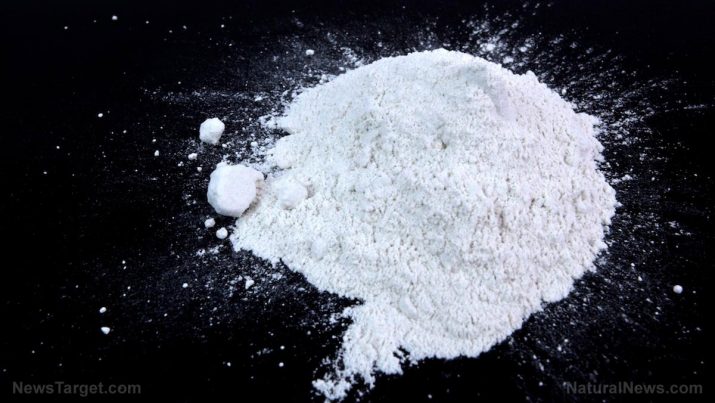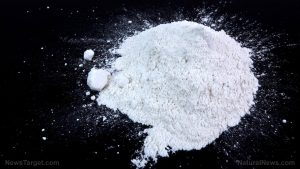
Indoxacarb — toxicity, side effects, diseases and environmental impacts
Thursday, November 30, 2017 by Rita Winters
http://www.naturalpedia.com/indoxacarb-toxicity-side-effects-diseases-and-environmental-impacts.html

Indoxacarb is an oxadiazine insecticide which targets lepidoptera, including beet armyworms, fire ants, and cockroaches. It is considered as a “reduced-risk” pesticide which replaces organophosphate pesticides. This chemical is produced by DuPont and marketed in the U.S. as StewardTM, AvauntTM, and Technical IndoxacarbTM. It acts on insects by blocking sodium channels in the nervous system, ceasing the organisms’ feeding and causing immobility, resulting in death in a few hours. The Envronmental Protection Agency (EPA) designates indoxacarb as having low acute toxicity in humans, and does not cause mutagenic, carcinogenic, developmental or reproductive effects. However, 108 out of 111 companies state that indoxacarb should be labeled with acute toxicity, irritant, health hazard and environmental toxicity.
Its chemical name is (S)-methyl 7-chloro-2,5-dihydro-2- [[(methoxycarbonyl) [4-(trifluoromethoxy)phenyl]amino]carbonyl]indeno[1,2-e][1,3,4]oxadiazine-4a(3H)-carboxylate. Other names for indoxacarb include Indeno[1,2-e][1,3,4]oxadiazine-4a(3H)-carboxylic acid, 7-chloro-2,5-dihydro-2-[[(methoxycarbonyl)[4-(trifluoromethoxy)phenyl]amino]carbonyl]-, methyl ester, (4aS)-; and methyl (4aS)-7-chloro-2-{(methoxycarbonyl)[4-(trifluoromethoxy)phenyl]carbamoyl}-2,5-dihydroindeno[1,2-e][1,3,4]oxadiazine-4a(3H)-carboxylate. Other trade names may include Advion, Arilon, and Avent.

List of known side effects
Laboratory tests show that indoxacarb, through various routes of exposure, causes negative side effects in rats, mice, rabbits and dogs. The side effects include, but are not limited to, nasal and ocular discharge, immobility, lethargy, tremors, spasms, salivation and rapid weight loss. Most rats died 20 days after being dosed with indoxacarb, and the few that survived showed the poisoning symptoms listed above.
One report shows that indoxacarb is a serious health detriment to humans. A 48-year old farmer ingested indoxacarb as a suicidal attempt. The farmer developed peripheral cyanosis and muddy-brown discoloration of blood, a result of methemoglobinemia (MetHb). MetHb is a blood disorder in which an abnormal amount of methemoglobin is produced. Together with hemoglobin, methemoglobin is responsible for absorbing oxygen and delivering it to different parts of the body. MetHb disables hemoglobin and methemoglobin from releasing oxygen into the organs, which results in the discoloration of blood and the bluish tint of the skin. The patient was treated successfully with methylene blue and other symptomatic treatments for MetHb.
Body systems affected by indoxacarb
Indoxacarb blocks the movements of sodium ions in nerve cells which results in paralysis, and subsequently, death of the affected organism. This chemical targets the central nervous system. Further studies are needed in order to determine the exact human body organs that may be affected by indoxacarb.
Items that may contain indoxacarb
Indoxacarb residue may be found in cotton, brassicas, sweet corn, lettuce, fruiting vegetables, fruits including apples, pears and cherries. These items are the registered uses for indoxacarb.
How to avoid indoxacarb
This chemical may be lethal to humans, especially when ingested. Proper precaution must be observed when using or handling indoxacarb. To avoid inhalation, use proper respiratory gear. Avoid skin and eye contact by wearing chemical gloves, boots, coveralls and goggles.
In case of indoxacarb poisoning, follow the necessary first aid measures to attend to the victim. When chemical dust is inhaled, transfer the victim to an open area with fresh air. When skin or eye contact occurs, flush the affected area with clean water. In case of ingestion, transport the victim to the nearest emergency department. For all cases mentioned, seek medical attention as soon as possible.
Where to learn more:
- Super mosquitoes with insecticide resistance discovered in Mali
- Poison.news
- Chemicals.news
- Pesticides.news
- Toxins.news
Summary
Indoxacarb may cause death when ingested.
Indoxacarb is known to cause methemoglobemia, a blood disorder.
Sources include:
Tagged Under: Tags: indoxacarb





